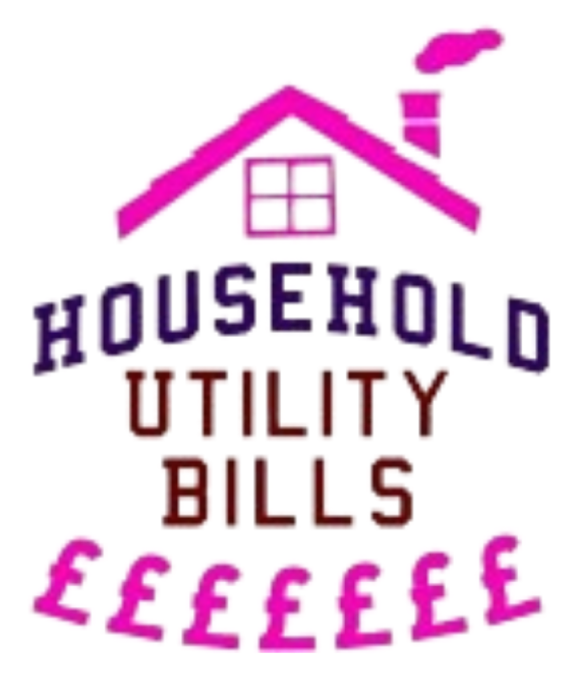So you want to get a broadband connection. And, you’re wondering how fast it ought to be – what broadband speed to choose. Well, there are a few different things you should know. The first is that broadband speed isn’t the same thing as bandwidth.
Bandwidth is the capacity of a conduit, and broadband speed is the speed at which data travels. Broadband connections tend to have high bandwidth, so they’re generally faster than DSL or cable connections.
Internet speed varies across the UK. In the main cities, internet speeds can be very high, while in the suburbs, the speed is often lower.
There are many factors to consider when choosing a broadband speed, including the type of connection. If you live in a suburban area, a minimum of 10 MBit/s is usually required. However, the digital divide in the UK is often between the suburbs and inner cities.
The two most important things to understand when shopping for broadband are upload speed and download speed. Download speed refers to the speed at which data is downloaded from the internet. On the other hand, Upload speed refers to the speed at which data is uploaded.
Broadband speed is important when you or your business needs to upload data to a cloud-based service. If you don’t need super high-speed internet, you can find a high-quality internet connection at an affordable price.
Broadband Speed: Upload Speeds and Download Speeds
The download speed of a broadband connection is faster than its upload speed. This is because most users spend their time downloading information, while the average person uploads much less. Broadband plans usually advertise the maximum speeds they can offer, but your actual internet speed might vary from those advertised.
Megabits per second (Mbps) is the measurement of data transfer rate. Gigabit speeds are increasingly becoming the norm for institutional use and economic development, and are best suited for heavy downloads.

Another important factor in broadband speed is the bandwidth. This is the amount of bandwidth your provider can offer. If you don’t have a lot of bandwidth, you may experience slower speeds than advertised. But, if you need fast Internet, you can buy an additional ISDN line.
If you want to know how to improve your internet speed, you can use a postcode checker to compare deals in your area. Remember that download and upload speed are not the same!
You may have wondered what the UK broadband speed is, or whether your local connection is fast enough for your needs. Broadband availability in the UK has been boosted this year, with full-fibre connections increasing by a fifth since last year and ultrafast connections increasing by 2% to reach 55% of households.
While broadband speeds in cities tend to be higher, the rural countryside tends to be slower. And while the rural-urban gap remains large, it is slowly narrowing.
Most people spend most of their time downloading information from the internet – downloading web pages, emails, and videos – and the speed of their connection will affect their ability to do so. However, upload speed is also an important factor.
Upload speed can affect your ability to back up your files in the cloud, upload photos to social networks, and view videos on websites such as YouTube. However, most users don’t bother to compare upload speed.
Also, it is possible to download files at super-fast speeds but experience much slower speeds during peak times. The speed of your connection may slow down like traffic during rush hours. To understand the speed of your internet connection, you’ll need to refer to the speed estimate you received from your broadband provider when you signed up.
However, keep in mind that internet speeds vary significantly depending on several factors. Distance to the nearest telephone exchange or cabinet may affect your broadband speed. The copper wires in your home may also affect the speed.
Broadband Speed: Average Download Speed in the UK
The average download speed in the UK has improved over the last few years, thanks to the increased uptake of superfast and ultrafast broadband packages. In 2017, 58% of UK broadband connections had peak speeds over 30Mbps, while only 23% of lines had such high speeds.
In 2016, only 5% of lines had average speeds below 10Mbps, whereas in 2017 78% of urban connections had these speeds. In 2017, however, the average upload speed increased by over five times as fast as the download speed, as full-fibre services had begun to roll out.
To arrive at this figure, researchers at M-Lab analysed 63 million speed tests taken across the globe over the course of a year. They collaborated with other organisations, including New America’s Open Technology Institute, Google Open Source Research and Princeton University’s Planet Lab. The data was collected in 2019 to determine the average download speed for the UK.
When considering the types of broadband services available, the average download speed in the UK can help you decide which one is best for your needs.
The average internet speed is not an accurate indicator of actual speed – it depends on how much each individual in a household uses the internet and what they expect from it. Likewise, an average speed is not a good indicator of what to look for in a broadband service – particularly if you are a frequent gamer or have a large family.
Broadband Speed: Gigabit Broadband
The UK broadband network is gaining coverage at an increasing rate. However, there are still some areas where Gigabit speeds aren’t available. Twisted pair copper lines are notorious for degrading signal quality and can also be affected by weather and poor home wiring.
If you live in an area where Gigabit speeds aren’t available, you can upgrade your connection with the help of one of the many free gigabit services available.
The UK government’s current policy aims to reach a gigabit-speed in 85% of premises by 2025. But there is still a long way to go before that goal is achieved. Many of the existing plans of providers may not be fully implemented in time. However, the government has set aside £5 billion in the next budget to fund the infrastructure required to deliver gigabit speeds to 20% of UK homes.
Most broadband providers have upgraded their network so they can offer 1,000Mbps broadband speed to their customers. That means you can download a two-hour blockbuster Netflix film in less than 100 seconds.
This is a high-quality broadband connection for busy households and home-workers. However, that speed comes at a cost. With so many people using broadband at home, Gigabit speeds are a necessity.
Gigabit internet is available in 44 postcodes in the UK. These packages can cost as little as £50 per month, depending on which provider you choose. It’s a good idea to research your options before signing up for a gigabit broadband package.
Broadband Speed: ADSL (Asymmetric Digital Subscriber Line)
ADSL is an acronym for Asymmetric Digital Subscriber Line. This type of broadband is delivered through the telephone line using the same copper wires that carry home phone service. The download speed of an ADSL service can vary greatly, ranging from 11 – 17 megabits per second (Mbps).
However, the upload speed is a lot lower, typically a few megabits per second (Mbps). ADSL is the most widely used form of broadband in the UK and is the most common type of connection. Only a handful of exchanges do not support ADSL or ADSL2+.
Although superfast packages have significantly higher speeds, this type of connection is still not widely available. Currently, only 2% of UK lines can access ultrafast packages.
Internet Speed Explained – The Latest Way To Get Super Fast Broadband: Video
While superfast and ultrafast packages use more modern fibre optic cables, they are not available everywhere. In rural areas, the average speed of a connection using an ADSL connection is only 10 – 11 megabits per second. The speed of the connection is dependent on the distance between the premises.
While a traditional ADSL connection is still the best option for most people, it is also important to check the upload speed when comparing broadband deals. Currently, the fastest speeds available on ADSL are about 350 Mbps for downloads and 20 Mbps for uploads. A new standard known as DOCSIS 3.1 is available now in the UK. If you need a fast connection, an average of 10 – 11 Mbps is usually the best option.
Broadband Speed: Co-Axial Cable
Virgin Media, one of the main cable broadband providers in the UK, boasts download speeds of 63-67Mbps. That’s more than enough for the whole household to stream HD video, play games, and browse the internet.
They also offer a range of different packages with differing download speeds. Virgin’s standard package can reach up to 362Mb, while its cheapest plan can only offer download speeds of up to 24Mbps.
You’ll be able to find out your own download and upload speeds by using an online speed test. The software that you use to measure your speed measures internet data roundtrips.
To ensure the most accurate results, you’ll want to run the test multiple times. The speed you get will depend on how many people live in your home and how much they use the internet. In general, the faster your internet connection, the better.
Although fibre and cable both offer fast internet speeds, their speeds vary from provider to provider. The speeds of fibre optic broadband are generally faster than those of co-axial cable. But are subject to availability in your area. You can check for availability before signing up for a package.
It’s worth noting that Ofcom regulations prevent consumers from signing up for longer contracts. Using the code to switch providers should help avoid any unpleasant surprises when you sign up for a new broadband plan.
It should also allow you to cancel your contract if you find that you’re not getting the advertised average speed. The Code is supported by 95% of broadband users and guarantees that you’ll receive the advertised average speed. Furthermore, if you’re unhappy with your broadband provider’s service, you can always ask for a discount.
Broadband Speed: Fibre to the Cabinet (FTTC)
One of the most popular types of broadband connection in the UK is fibre to the cabinet. This type of connection uses a mixture of copper and fibre cables to deliver broadband through existing telephone wires.
Fibre to the cabinet connections are cheap to install and extremely popular throughout the UK. However, because these connections are shared by so many other users, they will experience reduced performance during peak hours. Fibre to the cabinet broadband is not powerful enough for most businesses.
FTTC, or Fibre to the cabinet, is an internet technology that runs fibre optic cables from the exchange to the cabinet on a roadside. This then connects to a phone line at the premises.
FTTC is a revolutionary approach to internet connectivity and the foundation for connecting the nation. It is not available in every area of the UK, but over 90% of UK residents now have access to a fibre connection.
It uses very high frequencies to transmit data. High frequencies tend to create crosstalk between copper cable pairs.

In addition, a signal transmitted over one pair of copper cables may affect the signal on the other pair. Because of this, FTTC is a far superior option to copper-based connections for long-distance connections. This means that FTTC can deliver up to 80MB of data per second.
FTTC is a relatively new technology, so not all areas of the country will have access to it. However, many Telco providers have been investing heavily in it to make it more accessible.
Depending on your location, FTTC will likely deliver speeds of up to 80Mbps in download and 18Mbps in upload. This is a significant improvement over current broadband technology. But, it’s important to note that the speed you receive is dependent on how close you are to your Fibre cabinet.










